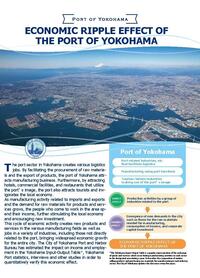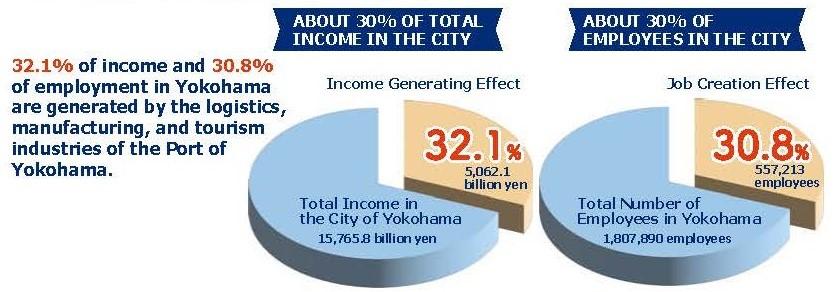- Top page
- Language
- For International Affairs(海外向け)
- Port of Yokohama
- About us
- Economic Ripple Effect
- Economic Ripple Effect
Main content starts here.
Economic Ripple Effect
We measure the economic ripple effect on the port once every five years at the Port of Yokohama. This economic ripple effect is estimated based on the Yokohama City Port Statistics data and hearings, as well as the Yokohama City Input-Output Table published in 2021.
Last updated date:2022/7/8
Economic Ripple Effect ( published in May 2022 )
The port sector in Yokohama creates various logistics jobs. By facilitating the procurement of raw materials and the export of products, the port of Yokohama attracts manufacturing business. Furthermore, by attracting hotels, commercial facilities, and restaurants that utilize
the port’ s image, the port also attracts tourists and invigorates the local economy.
As manufacturing activity related to imports and exports and the demand for raw materials for products and services grows, the people who come to work in the area spend their income, further stimulating the local economy and encouraging new investment.
This cycle of economic activity creates new products and services in the various manufacturing fields as well as jobs in a variety of industries, including those not directly related to the port, bringing widespread economic growth for the entire city. The City of Yokohama Port and Harbor Bureau has estimated the impact on income and employment in the Yokohama Input-Output Table, Yokohama Port statistics, interviews and other studies in order to quantitatively verify this economic effect.

Economic Ripple Effect(PDF:565KB)
Percentage of economic activity of total income and number of employees in the city
The functions of Yokohama Port include logistics functions, production functions, and tourism culture functions, and the economic activities of these industries account for 32.1% of the city's income and 30.8% of the city's employers.

Economic ripple effect per cruise ship call (exapmple)
The economic ripple effect of the arrival of one cruise ship (Asia cruises) is estimated to be approximately 175 million yen for refueling, replenishment of ingredients, and tourist consumption by passengers.
Page ID:126-941-753

